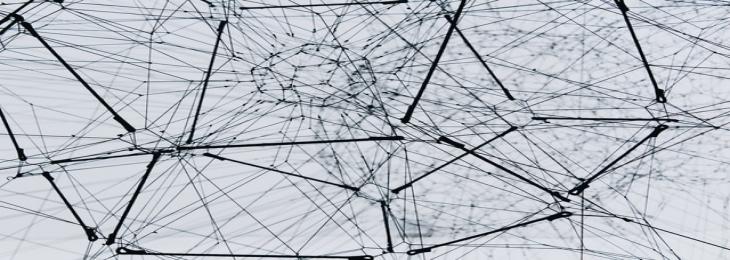
The decentralized systems allow multiple parties in a company to participate in the decision-making process at the organizational level.
In the decentralized systems, there is no singular central server or authority which will make decisions on the behest of all the members. All the members in the decentralized organization are referred to as ‘peers’, who make independent decisions in their respective community. Each community in an organization makes the decision as per their goals to avoid disputes among the peers. The mutual interaction among the peers gives the platform to every individual to express their opinions and thoughts in the decision-making. The decentralized system is not bounded to entry or exit of any peers from the organization, as the decision-making remains intact. This makes every peer as the independent member with distinct goals. Due to absence of centralized methodology, the decentralized systems are prone to cyber-attacks on peer level.
In the p2p network, every workstation grants access to data and resources i.e. all the systems on the network are equal. This network allow the peers to communicate with each other through their systems and share attachments between them.
- Properties of p2p network
- This network allows a peer to use accounts of operating systems such as Windows Vista and Windows XP when other peers access his/her system
- A local database saves all the usernames, passwords, permissions, accounts, etc.
- The database notifies the peers about any suspicious activity or misconduct done with their systems
- The peers have the authority over the accessibility of their resources and data present in their systems
Every system on the p2p network has the authority to allow or deny access to other systems, as every individual system controls the accessibility of its resources and data. The p2p networks find their applications in small deployments and sometimes in places where security is not of much concern.
Suppose a peer has shared a folder, which contains bank transaction records on her/his system, this enables other peers to access all the files of that folder. As peers can control accessibility to files and information on their systems, the network management is not controlled by a single peer.
A decentralized system is an internally-connected data system in which a single unit does not have the total authority. On computing platforms, the decentralized systems are deployed in the form of networked-systems. This system has several management nodes (mobile devices, computers), as each node on the network system interacts with other nodes to act as a multiple unit. The decentralized systems shift the decision-making authority and the control from a central owner or server to a network of servers or owners.
On business level, various sectors encourage the implementation of a decentralized system to maintain the output of their operations.
- Pros of Decentralization
- Improved self-esteem among the employees working at lower levels. Tolerance is eliminated.
- Employees are independent
- Peers can participate in all meetings that are taking place at organizational levels
- Team-building and team-spirit is promoted by decentralization
- Flexibility in each department as the managers are independent to execute their own decisions
- A healthy competition between various departments
- The managers can develop their decision-making and management skills to solve problems at divisional level
- Quick decision-making at departmental levels
- Reduced hierarchy system management. This leads to better communication and relationship among employees or peers and managers.
- This system accelerates the growing company to expand its regional reach, i.e. it results in opening of plants and business units in new regions
- Managers have the authority to shift operational schedules, execute the projects, suggest the promotions of their employees, and take disciplinal decisions
- Greater supervisions and work evaluation of every department aids in executing managerial control
- Improved employee satisfaction because of the power, value, status, and the independence given to them in decision-making. They get the feeling of a responsible contributor in the growth of the company.
- High relief for the executive working on top level of the organization. All the responsibilities are equally distributed among various departments, hence, reducing the workload on the top executives.
- The time required for accessing the data is faster as compared to other systems. Because the owners can create various nodes in different regions or areas with high user activity.
- Cons of Decentralization
- Co-ordination is complicated due to uneven opinions among the managers of different departments
- Intervention of government and unpredictability of market can refrain the growth of company
- The operational divisions are required to be large for enhancing the further extension of those divisions
- Due to large production lines required for expansion, decentralized systems cannot be implemented in small businesses because of their narrow production lines
- Higher pay-scale for each employee, as they make their own operational decisions and are involved in every decision-making process at the organizational level
- Additional cost of management in every division
Administrative expenditure rises for an organization when decentralized system is implemented. While recruiting an expertise personnel at the managerial level, each division demands the new professional member to be part of their team. This leads to the improper application of facilities and functionality of resources. Due to these reasons, decentralization is considered as a costly system. However, they are best-suited for large organizations.
In an organization related to information technology, the decentralized system has to be managed along with the centralized system while building the network system.
- Applications in Cryptocurrency
With the development of Blockchain technologies such as Bitcoin along with other cryptocurrency, the decentralized systems have been gaining global attention. The Blockchain technology is a decentralized system, which makes use of peer-to-peer network to implement the connectivity and safety of transactions without the need for any third-party such as banks. Although the ledger of Blockchain technology is equally distributed among all the cryptocurrency users, its systems are decentralized. This technology is used in Bitcoin in a decentralized manner so that the control of the system is not bounded to a single person or group. However, in centralized and private blockchains, the network of computer systems are owned and handled by a single system or node. Decentralized blockchains are permanent, i.e. the information once entered is unchangeable. The transactions are permanently recorded and accessible for everyone in Bitcoin. This cryptocurrency stores the information such as transactions, legal and real-estate contracts, and company’s confidential records.
To change the functionality of system or the data stored in it, the computing power of decentralized networks is used ensuring that changes are made as per the interest of the owner. All the blockchains of Bitcoin are decentralized in nature, due to which the transparency of transactions is achieved in this cryptocurrency.
Owing to its decentralized system, the blockchain technology does not store any data in a central server or location. Rather, the blockchain is shared and distributed across a network of systems. When a new block is introduced in the blockchain, every node or system on the network updates the blockchain in reflection of the change. With distribution of this data on the network, the interference in the system becomes extremely difficult. Hence, the information on the network is secured. Unlike in centralized systems, if a crypto-file is disclosed to a hacker, he will not be able to access the entire information of the network except that crypto-file.
- Server Crash
The decentralized systems are not limited to a single central server or owner. These systems have several central servers, each of which is capable of storing data of the resources which the users can access. A decentralized system is also at risk of crash as much as the centralized systems are. In case one of the central servers crash, the other servers can still access the functions to its users and transfer the information across the network. The data resources stay activated until one of the central networks is still operating. While the system continues to run as regular, the system maintenance team will repair the faults in the crashed servers along with other technical problems. In decentralized systems, the crash of the server may influence the function and reduce the access to some of the data. Although the decentralized system network safeguards its users from cyber-attacks and follows the privacy policy, the incidents of illegal activity and trading continue to occur on the network. The network allows the users to access the data through the browser which is the cause for the most illegal activities on the blockchain. The crypto-industry has raised concerns over the government regulations on crypto-currencies. The new policy will curb the participation of users in their networks. As per this policy, the financial companies are supposed to obtain the data of their customers while opening an account and verify their identity. The crypto-users are also expected to share their digital accounts for security reasons.
However, this system is still a major improvement over the centralized system when considering the total network performance.






